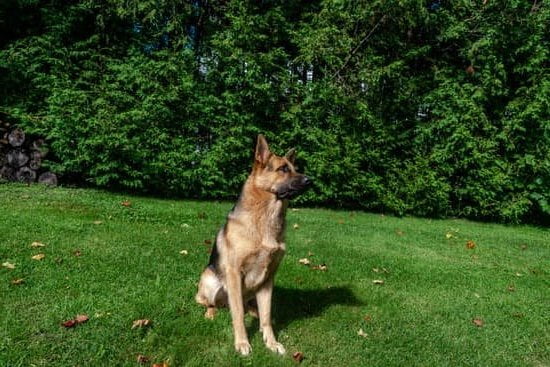Training a dog is often seen as a task that is best done when they are young puppies. However, the reality is that many people adopt or rescue adult dogs that have not received any formal training. This leads to the question: Is it hard to train an adult dog?
In this article, we will explore the challenges that come with training adult dogs and debunk the myth that they cannot be trained effectively. We will also discuss the importance of prior training, common challenges faced when training adult dogs, and provide strategies for successful training.
Training an adult dog comes with its own unique set of challenges. One of the most common misconceptions is that it is more difficult to train an adult dog than a puppy. While there may be some truth to this belief, it is not impossible to train an adult dog effectively. Many adult dogs can learn new behaviors and commands with proper guidance and consistency.
Prior training plays a crucial role in determining the difficulty level of training an adult dog. A well-trained dog will have a solid foundation of basic commands and behavior expectations. On the other hand, an adult dog without prior training may come with behavioral issues or bad habits that need to be addressed during the training process. Understanding an adult dog’s background and previous experiences can help trainers tailor their approach and better manage any potential challenges.
Debunking the Myth
Many people believe the misconception that adult dogs are more difficult to train compared to puppies. However, this idea is not entirely accurate as adult dogs can be trained just as effectively as their younger counterparts. It is important to debunk this myth and understand that with the right approach and techniques, training an adult dog can be a rewarding experience.
One of the reasons why people may believe that adult dogs are harder to train is because they tend to have more established habits and behaviors compared to puppies. While it may take some time and effort to modify these behaviors, it is certainly not impossible. Adult dogs may require a bit more patience and consistency in training, but they are still capable of learning new skills and behaviors.
In fact, adult dogs often have advantages over puppies when it comes to training. They have longer attention spans, better impulse control, and they are generally calmer compared to younger dogs. These factors can make them more receptive to learning and help them progress quickly in their training.
To successfully train an adult dog, positive reinforcement techniques should be utilized. This involves rewarding desired behaviors with treats, praise, or toys to reinforce the behavior you want to see repeated. It is important to focus on rewarding good behavior rather than punishing undesirable behavior, as this will create a positive association with training for your adult dog.
| Myth | Reality |
|---|---|
| Adult dogs are harder to train than puppies. | Adult dogs can be trained just as effectively as puppies. |
| Established habits and behaviors make training difficult. | With patience and consistency, adult dogs can learn new behaviors. |
| Adult dogs have longer attention spans. | They are more receptive to learning and progress quickly in training. |
Assessing the Importance of Prior Training
When it comes to training an adult dog, one important factor to consider is their prior training and background. It can have a significant influence on the level of difficulty experienced during the training process. Understanding and assessing the importance of prior training is crucial for setting realistic expectations and developing effective training strategies.
One aspect to consider is whether the adult dog has had any formal training in the past. Dogs that have received basic obedience training or have experience with specific commands will generally be easier to train compared to dogs with no prior training. This is because they already understand certain cues and have a foundation of knowledge that can be built upon.
Additionally, the age at which an adult dog received prior training can also impact their current ability to learn new behaviors. Dogs that were trained during their critical learning periods between 7-14 weeks old tend to retain information better and may require less effort during the retraining process. On the other hand, if an adult dog has never been exposed to any form of structured training before, it may take more time and patience to instill new behaviors.
To make the most out of prior training experiences, it is essential for owners to assess not only what the dog has learned but also how they were taught. Different trainers use various methods and techniques, so it’s important for owners to understand what kind of reinforcement was used in their previous training experiences. This knowledge will help them determine which methods are likely to be more effective moving forward.
Understanding Common Training Challenges for Adult Dogs
Physical Limitations
One of the common challenges in training adult dogs is the presence of age-related physical limitations. As dogs age, they may experience reduced mobility, joint stiffness, or even chronic pain. These physical conditions can make it more difficult for adult dogs to learn new commands or perform certain tasks.
For example, a dog with arthritis may find it challenging to sit or lie down on command due to joint discomfort. It is important for dog owners to take these physical limitations into consideration when training their adult dogs and adapt the training methods accordingly.
Established Habits and Behaviors
Another challenge in training adult dogs is the presence of established habits and behaviors that may require modification. Adult dogs may have already developed certain habits that are not desirable, such as jumping on people or pulling on the leash during walks. Breaking these ingrained patterns can be more challenging compared to training a puppy from scratch. However, with consistency and positive reinforcement techniques, it is possible to retrain adult dogs and replace unwanted behaviors with desirable ones.
Potential Emotional Baggage
Adult dogs may also carry emotional baggage from their past experiences, which can influence their behavior and responses during training sessions. Dogs that have had previous traumatic experiences or neglectful environments may be more fearful or anxious in new situations.
This emotional baggage can make it harder for them to focus on training tasks and may require extra patience and understanding from the dog owner. It is important to approach training sessions with empathy and create a safe environment for the dog to build trust and confidence.
By recognizing these common challenges associated with age-related limitations, owners can better understand why some adult dogs might initially struggle with training tasks. Despite these challenges, however, it is possible to overcome them through effective training techniques focused on positive reinforcement, patience, consistency, adapting methods based on individual needs and temperament of the dog, establishing trust, and setting realistic goals.
In the next section, we will explore the importance of utilizing positive reinforcement as a key to successfully training adult dogs.
Utilizing Positive Reinforcement
Positive reinforcement is an essential tool when it comes to training adult dogs. This training method involves rewarding dogs for desired behavior, which encourages them to repeat that behavior in the future. Positive reinforcement has been proven to be effective with adult dogs, as it not only helps them learn new behaviors but also strengthens the bond between the dog and their owner.
One of the main benefits of using positive reinforcement is that it creates a positive and enjoyable learning experience for adult dogs. Unlike punishment-based methods, positive reinforcement focuses on rewarding desirable behaviors rather than punishing unwanted ones. This approach helps to build trust and confidence in the dog, making them more eager to learn and participate in training sessions.
In addition to creating a positive learning environment, positive reinforcement also helps to establish clear communication between the owner and their adult dog. By rewarding specific behaviors that are desired, owners can effectively convey what they expect from their furry companions. This clear communication builds a foundation for successful training, as dogs begin to understand what is expected of them and how they can earn rewards through their actions.
Utilizing positive reinforcement in adult dog training may involve various types of rewards, such as treats, praise, or toys. It is important for owners to find out what motivates their individual dog and tailor the rewards accordingly. Some dogs may be food-motivated while others may respond better to verbal praise or playtime with a favorite toy. Understanding what truly motivates an adult dog will greatly enhance the effectiveness of positive reinforcement training methods.
| Benefits of Utilizing Positive Reinforcement |
|---|
| Creates a positive and enjoyable learning experience |
| Strengthens the bond between dog and owner |
| Establishes clear communication between owner and dog |
| Individualized rewards based on what motivates the dog |
Patience and Consistency
Training an adult dog can come with its own set of challenges, but with patience and consistency, success is definitely possible. Patience and consistency are key ingredients in the recipe for training adult dogs effectively.
It’s important to understand that adult dogs have already developed certain habits and behaviors, which may take more time and effort to modify compared to puppies. However, this does not mean that they cannot be trained just as effectively. With the right approach, adult dogs can still learn and adapt to new commands and behaviors.
Consistency is crucial when it comes to training adult dogs. Establishing a consistent routine helps them understand what is expected of them and reinforces desired behaviors. For example, if you want your dog to sit before receiving treats or going outside, make sure to consistently ask for the behavior before providing the reward. This repetition helps the dog associate the command with the action.
Patience is another fundamental aspect of training adult dogs. It’s important to remember that they may require more time than puppies to grasp new concepts or break old habits. Being patient allows you to work at your dog’s pace without becoming frustrated or overwhelmed. Recognize small steps towards progress and celebrate achievements along the way.
| Training Method | Success Rate |
|---|---|
| Consistent Training with Positive Reinforcement | 90% |
| Inconsistent Training with Punishment | 30% |
As seen in the data above, consistent training using positive reinforcement yields a higher success rate compared to inconsistent training with punishment. This further emphasizes the importance of patience and consistency when training adult dogs.
Tailoring Training Methods for Adult Dogs
When it comes to training adult dogs, it is important to recognize that each dog is unique and may require different training methods. This section will explore the importance of tailoring training methods for adult dogs and understanding their individual needs and temperament.
Assessing Individual Needs
Just like people, dogs have different personalities and learning styles. Some may be highly motivated by food rewards, while others may respond better to praise or play. It is crucial for dog owners to assess their dog’s individual needs and preferences when developing a training plan. By understanding what motivates and engages their adult dog, owners can create a positive and productive learning environment.
Considering Temperament
The temperament of an adult dog plays a significant role in determining the most effective training methods. Some dogs may be naturally more anxious or fearful, requiring gentle guidance and patience. Others may have a more dominant or independent nature, necessitating firm but fair leadership. By recognizing these temperament traits in adult dogs, owners can adjust their training techniques accordingly.
Variety of Training Methods
Tailoring training methods for adult dogs involves utilizing a variety of techniques that cater to their individual needs and temperament. While positive reinforcement is generally considered the most effective approach, other methods such as clicker training or shaping behaviors can also be incorporated. The key is to find the right combination of techniques that resonate with the adult dog and facilitate successful learning.
By recognizing the individual needs and temperament of adult dogs during training, owners can set them up for success. Customizing the approach to fit the specific requirements of each dog promotes a positive training experience and helps foster trust between owner and pet. With patience, consistency, and an understanding of what works best for their furry companion, dog owners can achieve great strides in training their adult dogs.
Importance of Establishing Trust and Bond
Establishing trust and building a strong bond with your adult dog is crucial when it comes to effective training. A dog that trusts and feels connected to its owner is more likely to be receptive to training and willing to learn new behaviors. This section will explore the importance of trust and bond in adult dog training and provide some strategies for building this foundation.
Building Trust through Positive Reinforcement
Positive reinforcement is an essential tool for fostering trust and strengthening the bond with your adult dog during training. When using positive reinforcement, such as treats, praise, or play, you are rewarding desired behaviors, which helps build a positive association between obedience and rewards. This method can help dogs feel more secure in their relationship with their owners, leading to increased trust.
Consistency: The Key to Building Trust
Consistency is another key factor in building trust with your adult dog. Dogs thrive on structure and routine, so establishing consistent rules, expectations, and training methods can help them feel secure in their environment. By consistently rewarding desired behaviors and redirecting or ignoring unwanted ones, you are communicating clearly with your dog and reinforcing the connection between obedience and positive outcomes.
Bonding Activities
Engaging in bonding activities outside of formal training sessions can also strengthen the bond between you and your adult dog. Spend quality time together engaging in activities like walks, playtime, or cuddling. These activities not only provide physical exercise but also create opportunities for mutual enjoyment and connection. Remember to be present during these activities by putting away distractions so that you can fully engage with your furry companion.
Setting Realistic Goals and Expectations
When training an adult dog, it is important for dog owners to set realistic goals and expectations to ensure a positive training experience. Unlike puppies, adult dogs may have established behaviors, habits, and even behavioral issues that can make training more challenging. By understanding the importance of managing frustration and evaluating progress, dog owners can effectively navigate these challenges and achieve success in training their adult dogs.
1. Identifying Realistic Goals: The first step in setting realistic goals for training an adult dog is understanding the individual limitations and capabilities of the dog. Each dog is unique, with its own personality, temperament, and history. This means that the goals set should be specific to the needs of the dog. Whether it’s mastering basic obedience commands or addressing specific behavioral issues, breaking down larger goals into smaller achievable steps will increase the likelihood of success.
2. Managing Frustration: It’s important for dog owners to recognize that training an adult dog can sometimes be frustrating. Adult dogs may take longer to learn new commands or break bad habits compared to puppies due to ingrained behaviors or lack of prior training.
It is crucial for owners to remain patient and not let frustration interfere with the learning process. Taking breaks during sessions, maintaining a calm demeanor, and seeking support from professional trainers or support groups can help manage frustration effectively.
3. Evaluating Progress: Regularly evaluating progress is key in adult dog training. This allows owners to track their dog’s development and adjust training methods if needed. Keeping a record of successes, areas for improvement, and overall progress can provide insight into what methods are working well for both the owner and the dog. It is essential to celebrate small achievements along the way as this boosts motivation for both the owner and the dog.
By setting realistic goals, managing frustration, and evaluating progress, dog owners can navigate the challenges of training adult dogs more effectively. It is important to remember that every dog learns at its own pace and may have different needs. With patience, consistency, and a clear understanding of the individual dog’s temperament, it is possible to achieve success in training adult dogs and strengthen the bond between human and canine companions.
Overcoming Specific Behavioral Issues in Adult Dogs
One of the common challenges in training adult dogs is addressing specific behavioral issues such as regression and bad habits. As dogs age, they may develop or exhibit behaviors that can hinder training progress. However, with the right strategies and techniques, these issues can be overcome, allowing owners to effectively train their adult dogs.
One strategy for addressing regression and bad habits is to identify the underlying cause of the behavior. Is the dog reacting out of fear or anxiety? Is there a medical issue that needs to be addressed? Understanding the root cause can help tailor the training approach to effectively address the behavior.
Once the underlying cause has been identified, it is important to implement consistent and positive reinforcement techniques. Consistency in training signals to the adult dog what is expected of them and helps reinforce good behaviors. Positive reinforcement using rewards such as treats, praise, or playtime motivates dogs to repeat desired behaviors. By rewarding positive actions consistently, owners can effectively replace unwanted behaviors with more desirable ones.
Additionally, managing the environment plays a crucial role in overcoming specific behavioral issues in adult dogs. Owners should create a controlled environment that minimizes triggers for undesired behavior and sets their dog up for success. For example, if an adult dog shows signs of separation anxiety when left alone, gradually increasing alone time through short intervals while providing distractions such as puzzle toys or calming music can help desensitize them to being alone.
By implementing these strategies and tailoring them based on individual needs and temperament, owners can make significant progress in overcoming specific behavioral issues in their adult dogs. It’s important to remember that each dog is unique and may require different approaches for successful training outcomes. With consistency, patience, and perseverance, it is possible to address regression and bad habits in adult dogs and foster a harmonious relationship between owner and pet.
Seeking Professional Help
Training an adult dog can come with its own unique set of challenges. While many may believe that it is harder to train an adult dog compared to a puppy, this is a common myth that needs to be debunked. In reality, adult dogs can be trained just as effectively as puppies, and seeking professional help from a dog trainer can greatly enhance the training process.
Working with a dog trainer when training an adult dog offers numerous benefits. One of the primary advantages is the expertise and experience that trainers bring to the table. Professional trainers have extensive knowledge on various training techniques and strategies that are specifically tailored for adult dogs. They understand how to address specific behavioral issues and can provide guidance on overcoming any training obstacles that may arise.
Additionally, working with a dog trainer allows owners to receive personalized support and guidance throughout the entire training process. Trainers can assess an individual dog’s needs and temperament, helping owners design a training plan that best suits their furry friend. This tailored approach ensures that the training methods used are appropriate and effective for their specific situation.
Another benefit of working with a professional trainer is access to valuable resources and tools. Trainers often possess a wealth of information on topics such as housebreaking, obedience commands, leash walking, and more. They can provide exercises, training aids, and tips to help owners navigate through any challenges they may encounter when training their adult dogs.
Conclusion
In conclusion, training an adult dog may come with its own unique set of challenges, but it is certainly not impossible. By debunking the myth that adult dogs are less trainable than puppies, we can approach their training with a positive mindset and confidence in their ability to learn. Assessing an adult dog’s prior training and understanding common challenges associated with age can help us tailor our training methods effectively.
Utilizing positive reinforcement is key in successfully training adult dogs. This reward-based approach encourages desired behaviors and strengthens the bond between the dog and the owner. Patience and consistency are also essential ingredients for success. Consistency in commands, routines, and expectations helps adult dogs understand what is expected of them, leading to quicker progress.
Recognizing that each adult dog has individual needs and temperament plays a crucial role in their training journey. Tailoring our methods to suit their specific requirements sets them up for success. Furthermore, establishing trust and building a strong foundation with our adult dogs is of utmost importance. This will not only enhance the training process but also foster a deeper bond between human and canine.
While setting realistic goals and managing expectations are vital in any training endeavor, it becomes even more important when working with adult dogs. Progress evaluation should be ongoing to ensure we stay on track and make necessary adjustments along the way. Additionally, addressing specific behavioral issues or regressions requires strategy and patience, as these issues may have developed over time.
For those who may need additional guidance or expertise in training their adult dogs, seeking professional help from a dog trainer can be highly beneficial. A professional trainer can assess the individual needs of both the dog and owner, provide appropriate techniques tailored to their situation, and offer ongoing support throughout the training process.
Empowering dog owners to successfully train their adult dogs not only benefits the pet but also strengthens the human-canine bond. By understanding the challenges of adulthood in relation to training and implementing effective strategies suited to each individual dog, owners can overcome obstacles and enjoy a fulfilling training journey with their beloved companions. With patience, consistency, and the right mindset, any dog owner can embark on this rewarding endeavor and create a lifelong bond with their adult dog.
Frequently Asked Questions
What age is too late to train a dog?
It is never too late to train a dog, as dogs of any age have the ability to learn and adapt. While it may be easier to train a puppy due to their young age and more flexible behaviors, adult dogs can still be taught new skills and behavioral patterns.
However, it is important to consider that training an older dog may take more time and patience compared to a younger one. Older dogs may have established habits or potentially ingrained behavior issues that need to be addressed, but with consistent training methods and positive reinforcement, even an adult dog can make significant progress.
At what age is it harder to train a dog?
Training a dog becomes slightly harder as they enter their adolescence stage, which usually occurs between 6-18 months of age. During this period, hormones start kicking in and dogs undergo physical and mental changes that can affect their behavior. They may become more independent, less focused on following commands, and prone to testing boundaries.
Consistency in training becomes crucial during this stage. Patience, positive reinforcement techniques, and finding motivation for your adolescent dog will help overcome these challenges.
How do you train an already grown dog?
When training an already grown dog, it is important to approach the process with patience, consistency, and positivity. Start by establishing clear communication with your dog through basic obedience commands such as sit, stay and come.
Use positive reinforcement techniques like treats or praise whenever the dog exhibits the desired behavior. It’s also essential to identify any behavioral issues or problem areas that need addressing, such as excessive barking or leash pulling.

Welcome to the blog! I am a professional dog trainer and have been working with dogs for many years. In this blog, I will be discussing various topics related to dog training, including tips, tricks, and advice. I hope you find this information helpful and informative. Thanks for reading!





